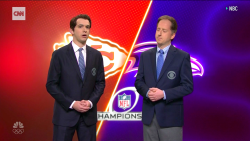Editor’s Note: Bill Carter, a media analyst for CNN, covered the television industry for The New York Times for 25 years, and has written four books on TV, including The Late Shift and The War for Late Night. The opinions expressed in this commentary are his own.

Are the movies over?
Not the art form itself, but the actual movie-going, sitting in a theater surrounded by strangers and popcorn, experience?
It’s not hard to find social predictors who argue that it might be, thanks to the increasing number of movies that quickly hit streaming services and allowed you to watch in your family room, along with the growing numbers of films produced directly by — and for — services like Netflix.
Tara Lachapelle, who covers the entertainment business for Bloomberg, wrote: “We have learned to live without movie theaters. Even the ones that make it through the crisis may find that online-streaming apps have stolen away audiences for good.”
Of course, many social predictors in other eras could not foresee live theater surviving once drama and comedy became available in movie form; nor that radio had a chance after a television set became a common part of the living room furniture. Art tends to adapt to circumstances; cave walls give way to canvas, but people keep on drawing.
Given that the genre of movies viewers were choosing to see in theaters before the pandemic had already tilted heavily toward comic book-dominated, hugely expensive blockbuster films, the safest bet is that studios will turn to even more of them for theatrical releases and steer their smaller, artier titles (the ones that tend to win the awards) toward streaming services after a brief release in the theater (in order to qualify for those trophies, of course).
Because of the pandemic, the Academy of Motion Picture Arts and Sciences temporarily permitted movies to be submitted for Oscars even without any theatrical release. Many of this year’s multiple nominees, like “Mank” and “Nomadland,” did have very short runs in theaters before they were streaming into homes. “Mank,” for example, is a Netflix production, and almost all its publicity was aimed to get Netflix subscribers to watch it there.

The pandemic has accelerated what was already a narrowing window between when films could be seen in theaters and when they could be viewed at home. Over the past year, next to no one — relatively speaking — has gone out to the movies. Box office returns in North America dropped from nearly $11.4 billion in 2019 to $2.2 billion in 2020.
That has only accelerated the throat-clenching in the business of running movie houses. Independent theaters were already barely surviving. The past year has essentially been a total loss for any company depending on ticket sales.
The question facing the film business now is whether this abandonment of the movie-house will be a temporary aberration forced by social distancing, or a sweeping lifestyle change. That conclusion may not be entirely clear until several of the big movie franchise films (the studios call them “tentpoles”) give it a go in the theaters this summer. Will people still line up to see “F9” (the eighth sequel in the “Fast & Furious” franchise) in a theater on June 25 — assuming the start date is not put off again?
And what about “Top Gun: Maverick,” which brings Tom Cruise’s Pete Mitchell character back into the jet pilot seat? That’s supposed to be unveiled July 2. (The original date was June 24, 2020.)
Those have always been the kind of hot summer movies that lured tens of millions from their homes (and the beach) to enjoy the full movie-going ritual: lines for tickets, full wallets ready to shell out for admission, a trough-size popcorn, vat-sized soda and bag of Twizzlers sufficient to feed a family of four; not to mention the chance that the only seats available will be in the front row, offering the extra bonus of back spasms as you hold your neck at a 60-degree angle.
Increasingly, there is another option, of course: Stay home and watch the film on a streaming service. In some cases, that could happen very close to the release date of the film, or even on the same day it arrives in theaters.
Warner Bros. sent many heads in the theater-owning business spinning when it announced that its full slate of 2021 releases would be available on WarnerMedia’s streaming outlet, HBO Max, on the same date of their opening in theaters. (WarnerMedia is CNN’s parent company.)
The decision seemed a bit premature, though not completely out of step for the big media enterprises which have signaled, with massive investments, their conviction that streaming is the future of the entertainment business. Disney last year announced a reorganization to allow the company to focus more heavily on its streaming service Disney+.
The most significant question looming over the next several months is: How much have people missed going to the movies? Of course, it is not as convenient as staying home, setting up a tray table and eating a nice dinner while streaming one of those reportedly small-budget films, maybe about a romance with a fish or Korean social climbing. (Both “The Shape of Water” and “Parasite” won Academy Awards for best picture.)
But as news breaks of more movie chains re-opening, and escape from a year’s worth of cabin fever gets tantalizingly close, the call of the more than century-old American tradition of going out to the movies may be impossible to resist for many patrons, even those not especially into comic books.
That might not be enough to sustain the movie industry at the level it enjoyed before Covid entered our lives, but it seems likely to retain some genuine appeal.
Especially when you factor in date night.


























